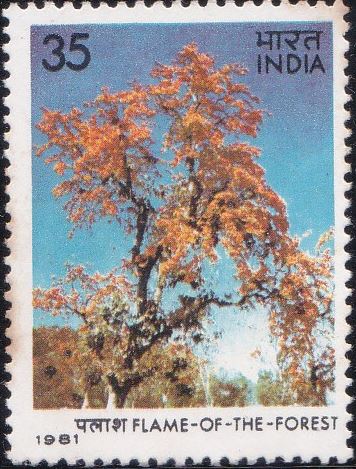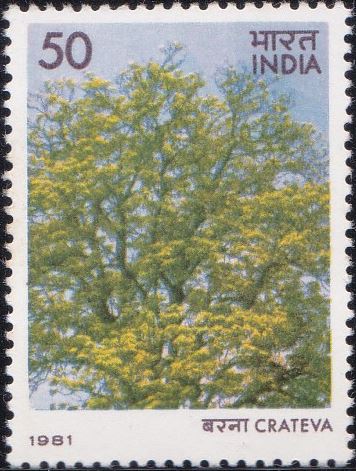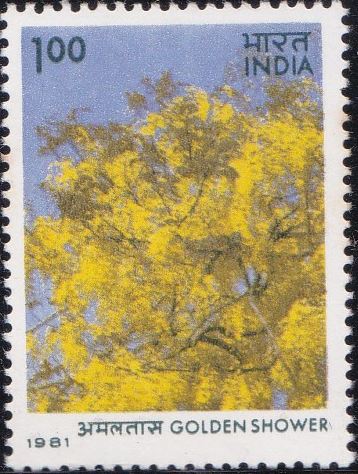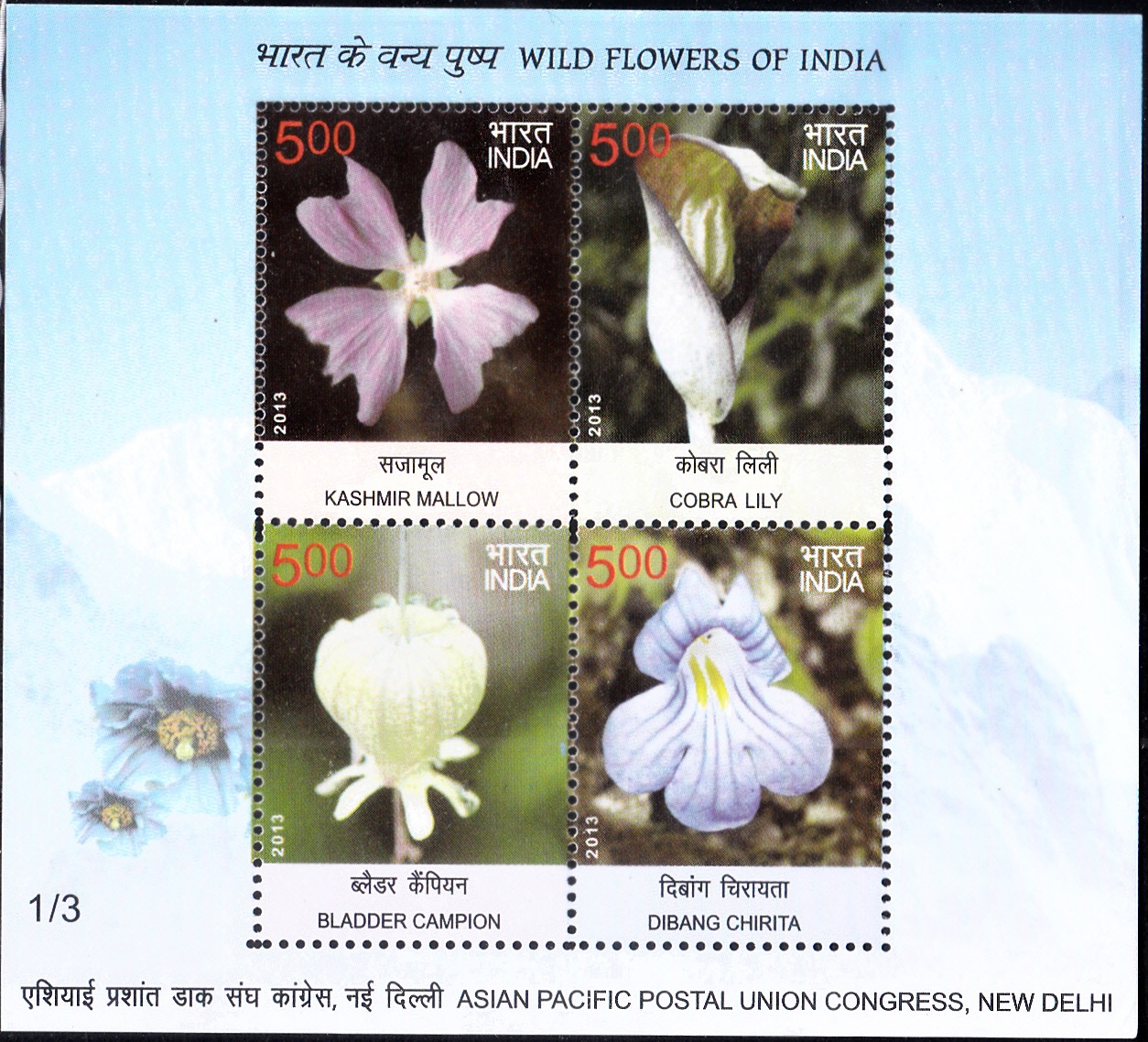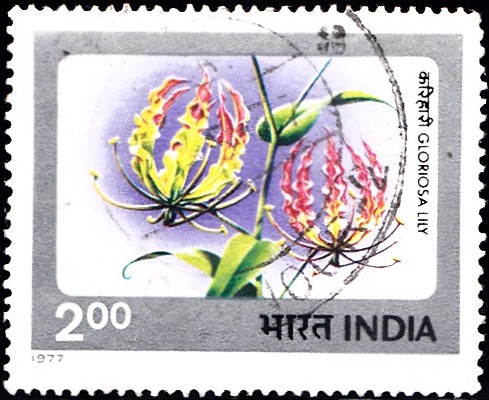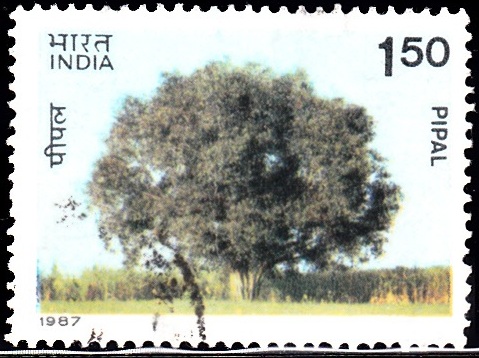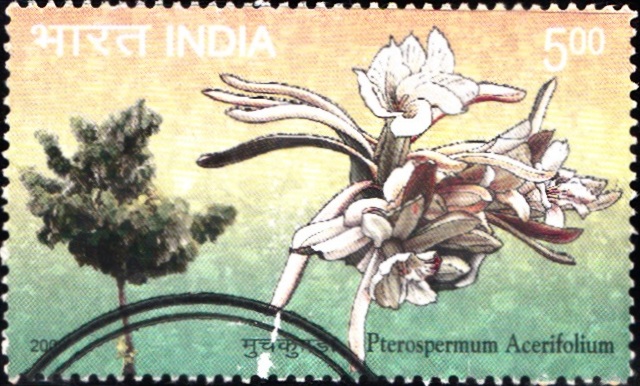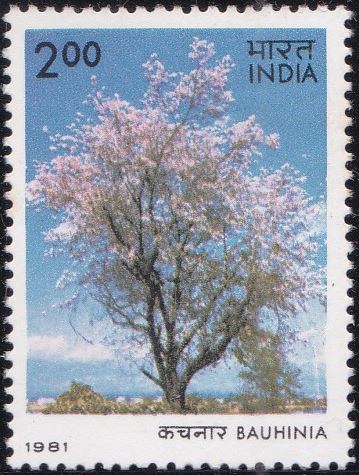
Indian Flowering Trees 1981
Complete Set of 4 nos of commemorative postage stamps on the flowering trees of India : Flame of the forest, Crateva, Golden shower and Bauhinia :
Issued by India
Issued on Sep 1, 1981
Designs : The photographs depicted on the stamps are by the following :
Flame-of-the-Forest (35 P) K. M. Vaid
Crateva (50 P) Rajesh Bedi
Golden Shower (100 P) Rajesh Bedi
Bauhinia (200 P) K. M. Vaid
First day cover was designed by Sumhinder Singh and the cancellation by Charanjit Lal.
Type : Stamps, Mint condition
Colour : Multicolour
Denomination : 35, 50, 100 & 200 Paise
Overall size : 3.91 cms X 2.90 cms
Printing size : 3.55 cms X 2.54 cms
Perforation : 13 x 13
Paper : Unwatermarked adhesive gravure stamp paper
Number printed : 20,00,000 each
Number per issue sheet : 35
Printing process : Photogravure
Printed at : India Security Press
About :
- Designed to bear heavy stress and strain, trees spread their branches all round their trunks to achieve a grace and balance unequalled by any trapeze artist. Thinner than silk strands and stronger than steel pins, their roots burrow into crevices in search of nutrients and moisture, and pump them up to the top-most leaves through an intricate network of conduits that make an engineer gasp in disbelief. With clockwork precision, trees notice the change of seasons, come to flower, bear fruit, set seed, and heal their wounds. Nature’s most efficient procedures of bio-mass, their green leaves absorb carbon dioxide from the atmosphere, release life-giving oxygen, and synthesize food in the presence of sunlight – an abundant source of energy that man has yet to harness properly.
- So far, man has learnt only to put an axe to trees. To meet his growing needs he has indiscriminately cleared vast stretches of forest land, little realizing that roots perform an important function as soil-binders. Consequently, wind and water swept away millions of the world’s most productive lands into arid wastes.
- FLAME-OF-THE-FOREST [Butea monosperma (Lamarck) Taubert]
- A slow-growing tree seldom reaching a height of 15 metres, the frost-hardy, drought-resistant Flame-of-the-forest occurs throughout India and is considered useful for reclaiming saline lands.
- By February, it sheds its trifoliate, hard, leathery leaves. It announces the advent of hot weather by bursting into a blaze of flowers, produced on great, stiff clusters. The flame-orange, red or vermilion petals are covered with soft hair that glimmer in sunlight, contrasting vividly with the jet-black or bottle-green velvety sepals.
- One of the few hosts on which the lac insect can be reared, it also yields a ruby-coloured gum used in tanning leather. The seed is valued as an anthelminthic.
- CRATEVA (Crateva nurvala Buchanan-Hamilton)
- A moderate-sized tree attaining a height of over 15 metres, it is named after Cratevas (Krateuas), a Greek naturalist and physician of the 1st Century B.C.
- Common throughout India, the much-branched tree with a head of glossy trifoliate leaves looks very majestic when in full bloom from March to May (earlier in the South). The beauty of the flowers is enhanced by a burst of prominent purplish-violet stamens that contrast well with white lilac tipped petals that slowly turn yellow.
- The bark of the tree is reported to be used as a demulcent, antipyretic, sedative, alterative and tonic.
- BAUHINIA (Bauhinia Variegata Linnaeus)
- Stocky and medium sized, with smooth trunk and thick foliage it is a beautiful ornamental tree that produces showey, fragment flowers in a range of colours – lavender, pink, mauve and purple with mottles, splashes and streaks of white and crimson. There is another variety with porcelain-white flowers, often with a mother-pearl gleam.
- Bauhinia variegata is often confused with the purple Bahunia (Bauhinia purpurea Linnaeus) which also produces variegated (though not white) flowers. The time of flowering is a distinguishing feature between the two. B. variegata is in bloom in spring while B. purpurea comes to flower in autumn.
- GOLDEN SHOWER (Cassia fistula Linnaeus)
- When most flowers are past their spring-time best, the Golden Shower decides to brighten up the summer morning. It does so by displaying a profusion of 5-petalled golden or sulphur-yellow fragrant flowers, hanging gaily on delicate, thread like pedicles.
- Draped in streaming clusters of golden sprays, the tree is a striking beauty from April to June. Though never entirely leafless, the deciduous Golden Shower sheds most of its leaves between March and May. The newly formed foliage has a rich copper or chocolate colour. A charming, slow-growing, about 9 metres high tree with a spreading, one crown, it produces durable wood used for making agricultural implements, carts and grain-pounders.
- Text by S. N. Tata.


